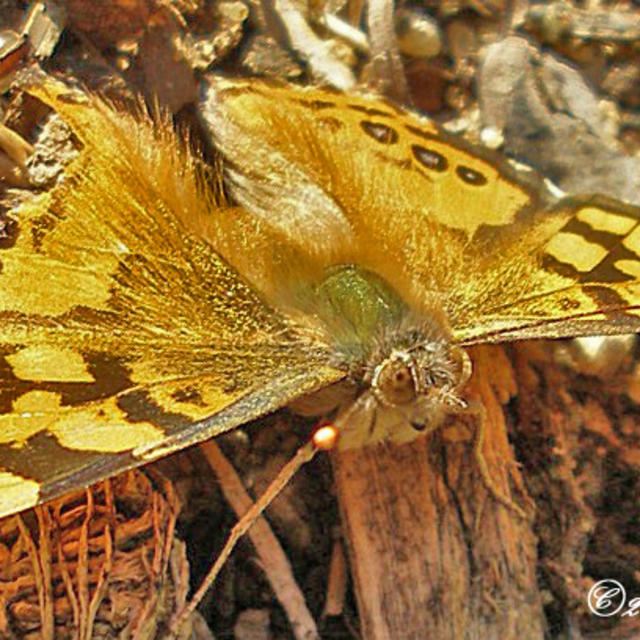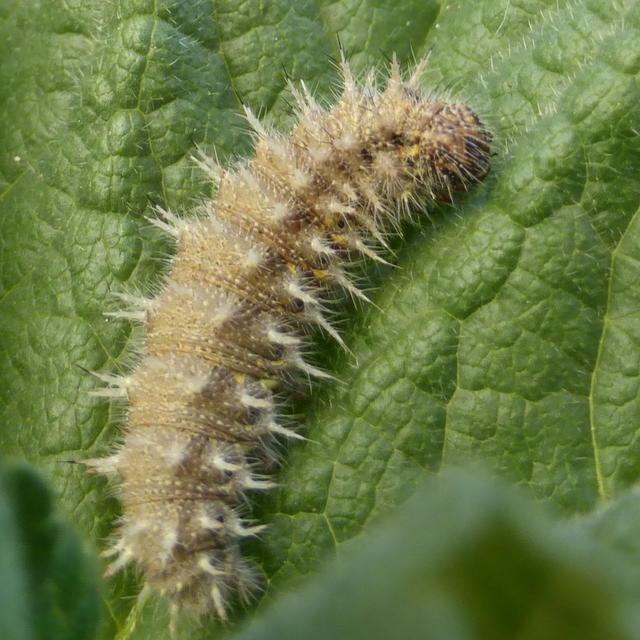West Coast Lady
Vanessa annabella (Field, 1971)
Family: Nymphalidae
Subfamily: Nymphalinae
Identification: Upperside is orange-brown with an orange bar at the leading edge of the forewing; hindwing with 3 or 4 blue submarginal spots. Underside with complex pattern; eyespots are obscured by other markings.
Wing Span: 1 1/2 - 2 1/4 inches (3/8 - 5.7 cm).
Life History: Males perch to watch for receptive females. Females lay eggs singly on upperside of host plant leaves; caterpillars eat leaves and live in a silken nest. Adults hibernate.
Flight: Many flights throughout the year in lowland California; two flights, summer and fall, in the Rocky Mountains; one flight in higher mountains.
Caterpillar Hosts: Many plants in the mallow family (Malvaceae) including tree mallow (Lavatera), globe mallow (Sphaeralcea), bush mallow (Malvastrum), mallow (Malva), alkali mallow (Sida), checkerbloom (Sidalcea), and hollyhock (Althea).
Adult Food: Flower nectar.
Habitat: Open places including weedy areas, gardens, roadsides, fields, foothills, chaparral, disturbed areas.
Range: Western North America from southern British Columbia south to Baja California Norte; south and east to Montana, Colorado, New Mexico, and Mexico. Strays to central Kansas, eastern North Dakota, and southern Ontario.
Conservation: Not required.
NCGR: G5 - Demonstrably secure globally, though it may be quite rare in parts of its range, especially at the periphery.
Management Needs: Occasionally causes minor damage to hollyhock (Althaea) leaves.
Comments: NULL
Get your BAMONA Gear!
Please donate!
We depend on donations to keep Butterflies and Moths of North America freely available. We want to express our gratitude to all who showed their support by making a contribution this year. You can donate to support this project at any time.
Advertise with us!
Do you have a product or service that you think would interest BAMONA users? If you would like to advertise on this website, contact us by email, or use the contact form and select the "Advertising" category.
Verified Sightings
Displaying 1 - 24 of 946 verified sightings

Observation date: Apr 03, 2024
Submitted by: MAKI
Region: San Luis Obispo County, California, United States
Verified by: Ken Davenport
Verified date: Apr 04, 2024

Observation date: Mar 14, 2024
Submitted by: madamirie
Region: Monterey County, California, United States
Verified by: Ken Davenport
Verified date: Mar 15, 2024

Observation date: Feb 20, 2024
Submitted by: MAKI
Region: Los Angeles County, California, United States
Verified by: Ken Davenport
Verified date: Mar 11, 2024

Observation date: Feb 28, 2024
Submitted by: Patricia12
Region: Ventura County, California, United States
Verified by: Ken Davenport
Verified date: Feb 29, 2024
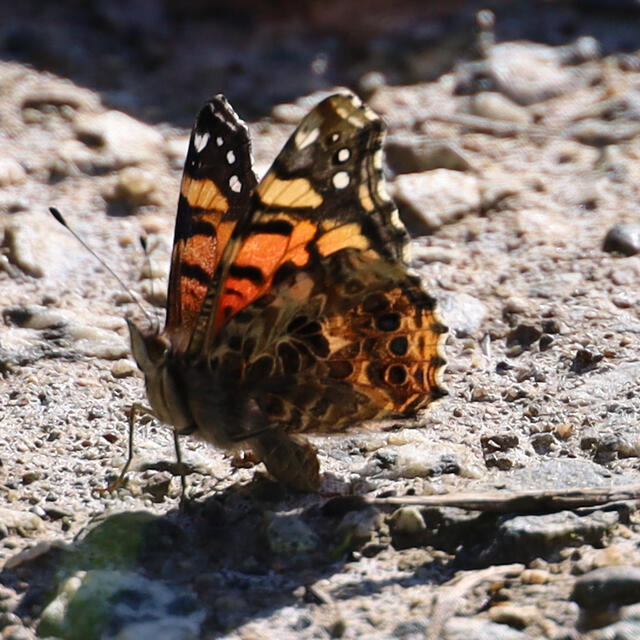
Observation date: Feb 25, 2024
Submitted by: madamirie
Region: Monterey County, California, United States
Verified by: Ken Davenport
Verified date: Feb 26, 2024
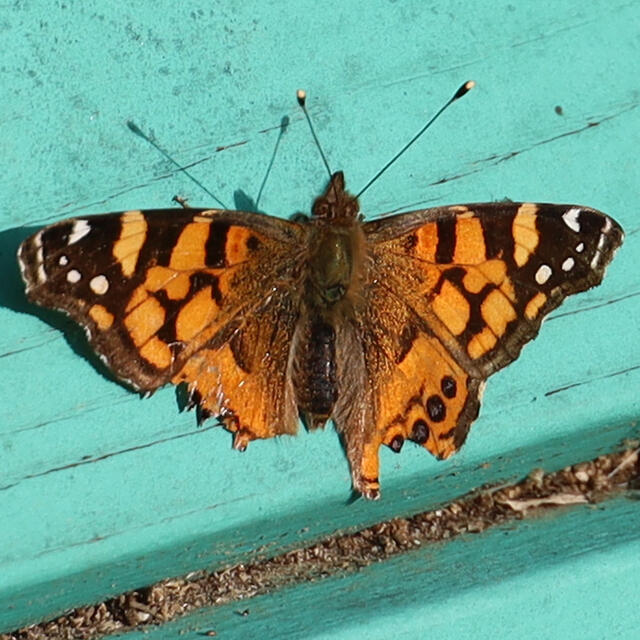
Observation date: Jan 15, 2024
Submitted by: madamirie
Region: Monterey County, California, United States
Verified by: Ken Davenport
Verified date: Feb 26, 2024
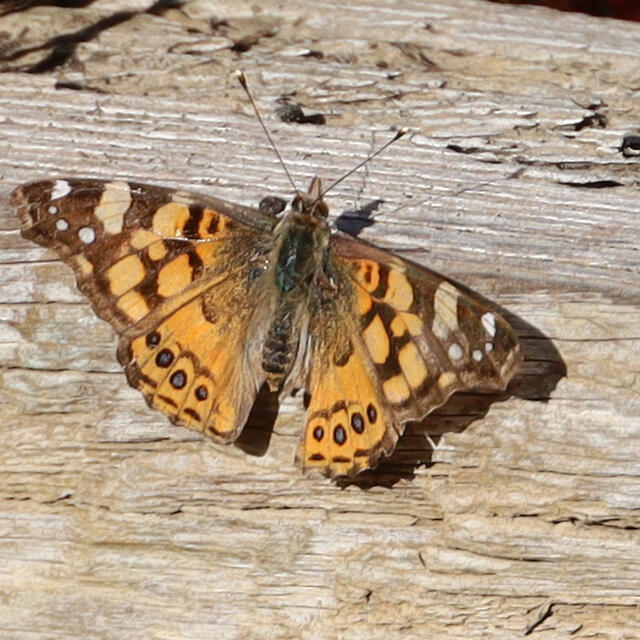
Observation date: Dec 09, 2023
Submitted by: madamirie
Region: Monterey County, California, United States
Verified by: Ken Davenport
Verified date: Feb 25, 2024

Observation date: Nov 18, 2023
Submitted by: sgguthart
Region: Larimer County, Colorado, United States
Verified by: mikefisher
Verified date: Jan 05, 2024

Observation date: Dec 28, 2023
Submitted by: MAKI
Region: Ventura County, California, United States
Verified by: Ken Davenport
Verified date: Dec 30, 2023
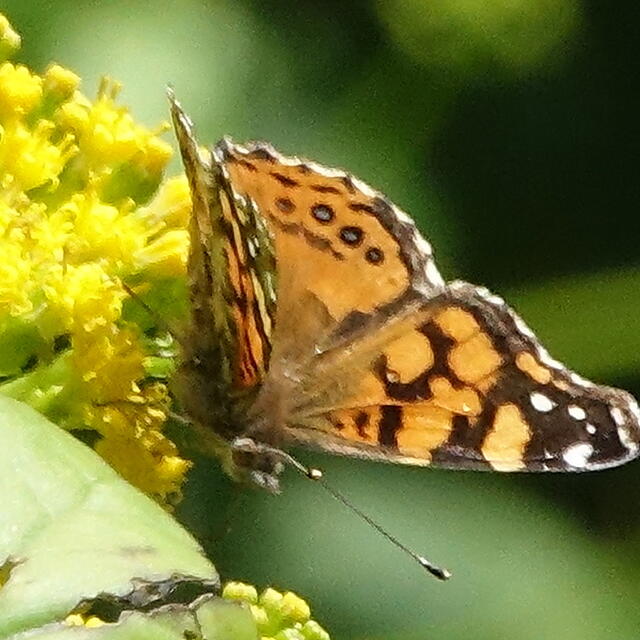
Observation date: Dec 21, 2023
Submitted by: Lisahug
Region: Sonoma County, California, United States
Verified by: Ken Davenport
Verified date: Dec 21, 2023

Observation date: Oct 18, 2023
Submitted by: ElizabethP
Region: Contra Costa County, California, United States
Verified by: Ken Davenport
Verified date: Dec 02, 2023

Observation date: Oct 10, 2023
Submitted by: Tashi Liem
Region: Alameda County, California, United States
Verified by: Ken Davenport
Verified date: Dec 01, 2023
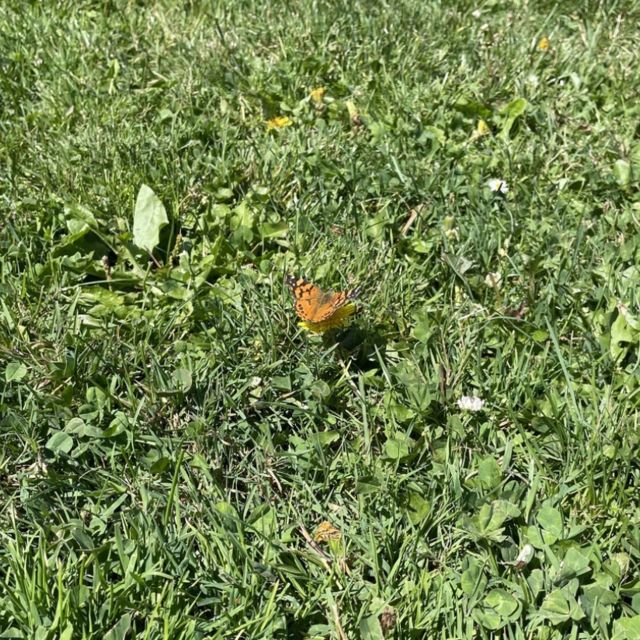
Observation date: Nov 21, 2023
Submitted by: katrinaoller
Region: San Mateo County, California, United States
Verified by: Ken Davenport
Verified date: Dec 01, 2023

Observation date: Oct 07, 2023
Submitted by: ElizabethP
Region: San Francisco County, California, United States
Verified by: Ken Davenport
Verified date: Nov 30, 2023

Observation date: Oct 30, 2023
Submitted by: Kalehua
Region: Alameda County, California, United States
Verified by: Ken Davenport
Verified date: Nov 28, 2023
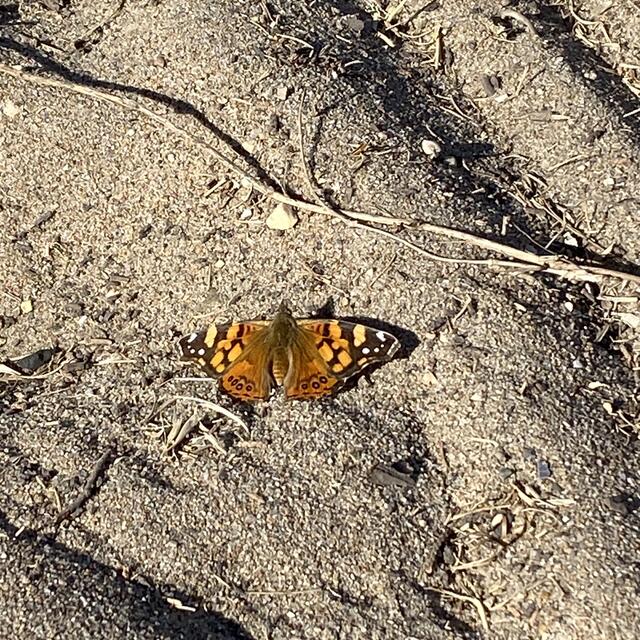
Observation date: Oct 21, 2023
Submitted by: Kalehua
Region: Santa Cruz County, California, United States
Verified by: Ken Davenport
Verified date: Nov 28, 2023
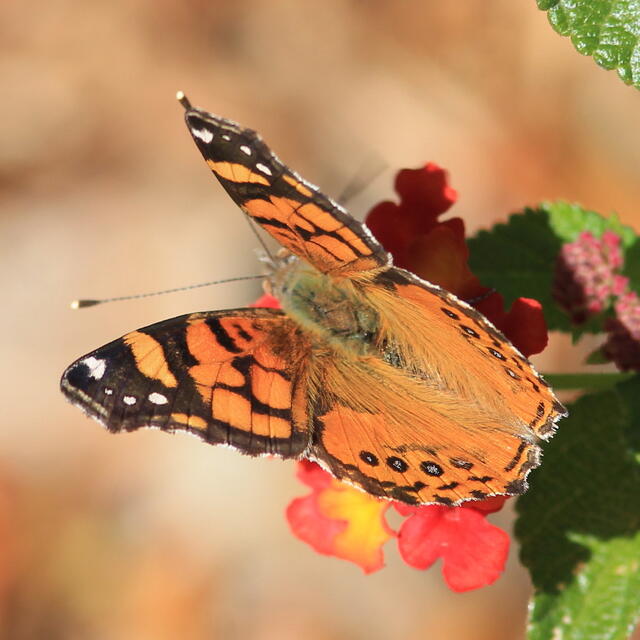
Observation date: Nov 26, 2023
Submitted by: jrmbutterfly
Region: Pima County, Arizona, United States
Verified by: John Saba
Verified date: Nov 26, 2023

Observation date: Sep 29, 2023
Submitted by: Lisahug
Region: Sonoma County, California, United States
Verified by: Ken Davenport
Verified date: Nov 21, 2023
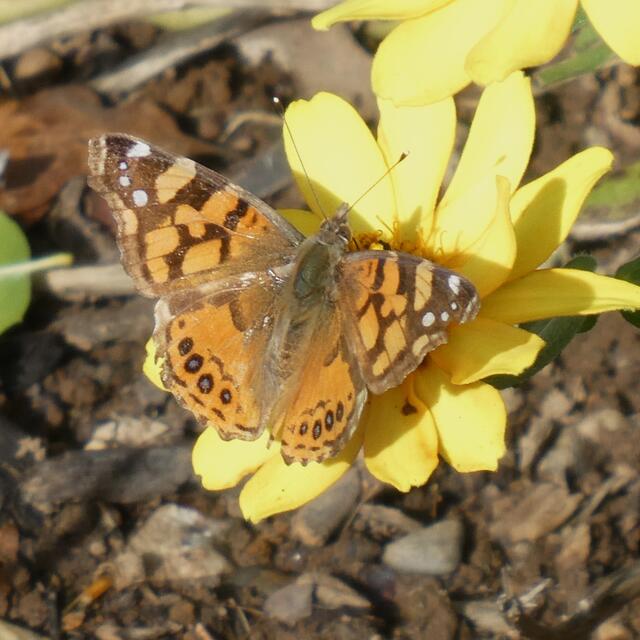
Observation date: Nov 21, 2023
Submitted by: cevmendo
Region: Mendocino County, California, United States
Verified by: Ken Davenport
Verified date: Nov 21, 2023

Observation date: Nov 16, 2023
Submitted by: Patricia12
Region: Ventura County, California, United States
Verified by: Ken Davenport
Verified date: Nov 17, 2023

Observation date: Sep 24, 2023
Submitted by: madamirie
Region: Monterey County, California, United States
Verified by: Ken Davenport
Verified date: Nov 06, 2023

Observation date: Oct 25, 2023
Submitted by: shuckabone
Region: Siskiyou County, California, United States
Verified by: Ken Davenport
Verified date: Oct 28, 2023
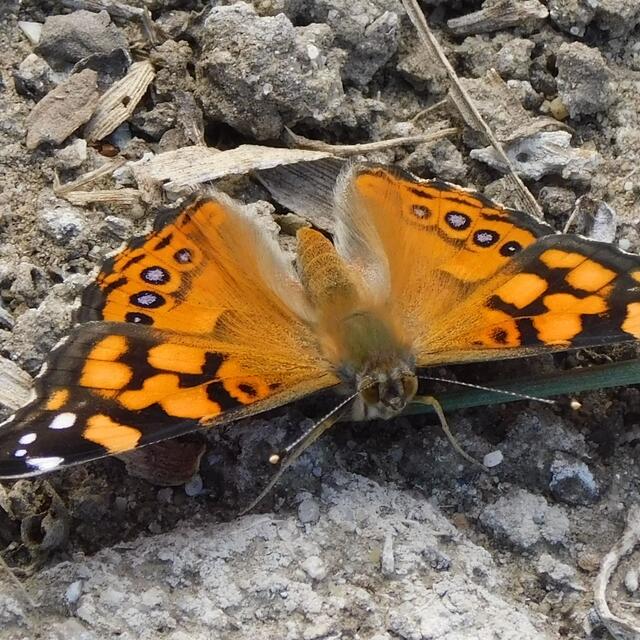
Observation date: Oct 08, 2023
Submitted by: Sue Bocchicchio
Region: Orange County, California, United States
Verified by: Ken Davenport
Verified date: Oct 23, 2023

Observation date: Oct 06, 2023
Submitted by: madamirie
Region: Monterey County, California, United States
Verified by: Ken Davenport
Verified date: Oct 23, 2023
- 1 of 40
- next ›


